Logitech 2014 Annual Report Download - page 258
Download and view the complete annual report
Please find page 258 of the 2014 Logitech annual report below. You can navigate through the pages in the report by either clicking on the pages listed below, or by using the keyword search tool below to find specific information within the annual report.-
 1
1 -
 2
2 -
 3
3 -
 4
4 -
 5
5 -
 6
6 -
 7
7 -
 8
8 -
 9
9 -
 10
10 -
 11
11 -
 12
12 -
 13
13 -
 14
14 -
 15
15 -
 16
16 -
 17
17 -
 18
18 -
 19
19 -
 20
20 -
 21
21 -
 22
22 -
 23
23 -
 24
24 -
 25
25 -
 26
26 -
 27
27 -
 28
28 -
 29
29 -
 30
30 -
 31
31 -
 32
32 -
 33
33 -
 34
34 -
 35
35 -
 36
36 -
 37
37 -
 38
38 -
 39
39 -
 40
40 -
 41
41 -
 42
42 -
 43
43 -
 44
44 -
 45
45 -
 46
46 -
 47
47 -
 48
48 -
 49
49 -
 50
50 -
 51
51 -
 52
52 -
 53
53 -
 54
54 -
 55
55 -
 56
56 -
 57
57 -
 58
58 -
 59
59 -
 60
60 -
 61
61 -
 62
62 -
 63
63 -
 64
64 -
 65
65 -
 66
66 -
 67
67 -
 68
68 -
 69
69 -
 70
70 -
 71
71 -
 72
72 -
 73
73 -
 74
74 -
 75
75 -
 76
76 -
 77
77 -
 78
78 -
 79
79 -
 80
80 -
 81
81 -
 82
82 -
 83
83 -
 84
84 -
 85
85 -
 86
86 -
 87
87 -
 88
88 -
 89
89 -
 90
90 -
 91
91 -
 92
92 -
 93
93 -
 94
94 -
 95
95 -
 96
96 -
 97
97 -
 98
98 -
 99
99 -
 100
100 -
 101
101 -
 102
102 -
 103
103 -
 104
104 -
 105
105 -
 106
106 -
 107
107 -
 108
108 -
 109
109 -
 110
110 -
 111
111 -
 112
112 -
 113
113 -
 114
114 -
 115
115 -
 116
116 -
 117
117 -
 118
118 -
 119
119 -
 120
120 -
 121
121 -
 122
122 -
 123
123 -
 124
124 -
 125
125 -
 126
126 -
 127
127 -
 128
128 -
 129
129 -
 130
130 -
 131
131 -
 132
132 -
 133
133 -
 134
134 -
 135
135 -
 136
136 -
 137
137 -
 138
138 -
 139
139 -
 140
140 -
 141
141 -
 142
142 -
 143
143 -
 144
144 -
 145
145 -
 146
146 -
 147
147 -
 148
148 -
 149
149 -
 150
150 -
 151
151 -
 152
152 -
 153
153 -
 154
154 -
 155
155 -
 156
156 -
 157
157 -
 158
158 -
 159
159 -
 160
160 -
 161
161 -
 162
162 -
 163
163 -
 164
164 -
 165
165 -
 166
166 -
 167
167 -
 168
168 -
 169
169 -
 170
170 -
 171
171 -
 172
172 -
 173
173 -
 174
174 -
 175
175 -
 176
176 -
 177
177 -
 178
178 -
 179
179 -
 180
180 -
 181
181 -
 182
182 -
 183
183 -
 184
184 -
 185
185 -
 186
186 -
 187
187 -
 188
188 -
 189
189 -
 190
190 -
 191
191 -
 192
192 -
 193
193 -
 194
194 -
 195
195 -
 196
196 -
 197
197 -
 198
198 -
 199
199 -
 200
200 -
 201
201 -
 202
202 -
 203
203 -
 204
204 -
 205
205 -
 206
206 -
 207
207 -
 208
208 -
 209
209 -
 210
210 -
 211
211 -
 212
212 -
 213
213 -
 214
214 -
 215
215 -
 216
216 -
 217
217 -
 218
218 -
 219
219 -
 220
220 -
 221
221 -
 222
222 -
 223
223 -
 224
224 -
 225
225 -
 226
226 -
 227
227 -
 228
228 -
 229
229 -
 230
230 -
 231
231 -
 232
232 -
 233
233 -
 234
234 -
 235
235 -
 236
236 -
 237
237 -
 238
238 -
 239
239 -
 240
240 -
 241
241 -
 242
242 -
 243
243 -
 244
244 -
 245
245 -
 246
246 -
 247
247 -
 248
248 -
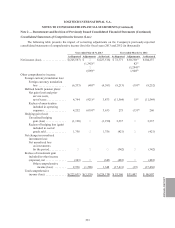 249
249 -
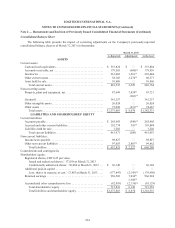 250
250 -
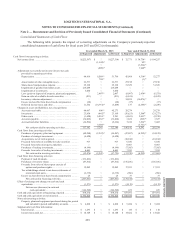 251
251 -
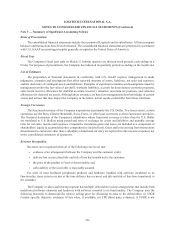 252
252 -
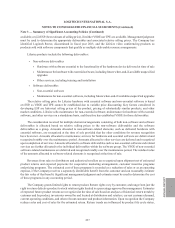 253
253 -
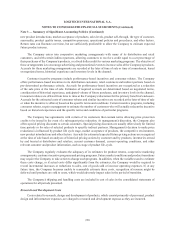 254
254 -
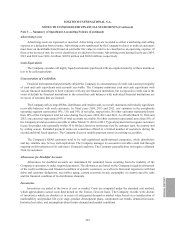 255
255 -
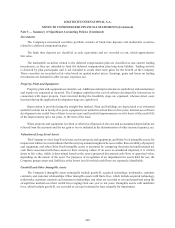 256
256 -
 257
257 -
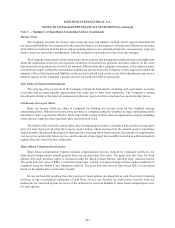 258
258 -
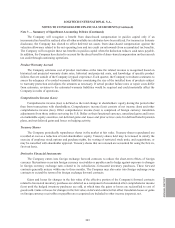 259
259 -
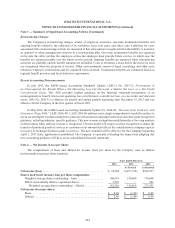 260
260 -
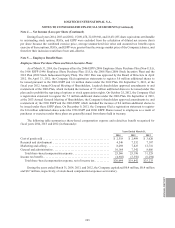 261
261 -
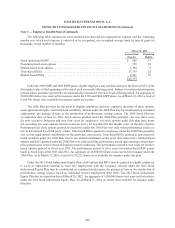 262
262 -
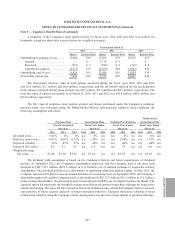 263
263 -
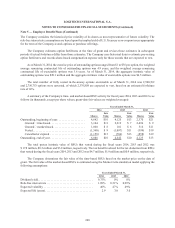 264
264 -
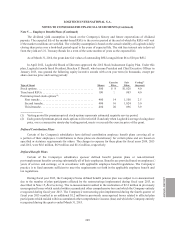 265
265 -
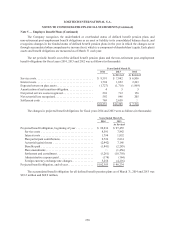 266
266 -
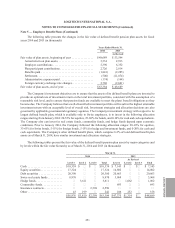 267
267 -
 268
268 -
 269
269 -
 270
270 -
 271
271 -
 272
272 -
 273
273 -
 274
274 -
 275
275 -
 276
276 -
 277
277 -
 278
278 -
 279
279 -
 280
280 -
 281
281 -
 282
282 -
 283
283 -
 284
284 -
 285
285 -
 286
286 -
 287
287 -
 288
288 -
 289
289 -
 290
290 -
 291
291 -
 292
292 -
 293
293 -
 294
294 -
 295
295 -
 296
296 -
 297
297 -
 298
298 -
 299
299 -
 300
300 -
 301
301 -
 302
302 -
 303
303 -
 304
304 -
 305
305 -
 306
306 -
 307
307 -
 308
308
 |
 |
LOGITECH INTERNATIONAL S.A.
NOTES TO CONSOLIDATED FINANCIAL STATEMENTS (Continued)
Income Taxes
The Company provides for income taxes using the asset and liability method, which requires that deferred
tax assets and liabilities be recognized for the expected future tax consequences of temporary differences resulting
from differing treatment of items for tax and accounting purposes. In estimating future tax consequences, expected
future events are taken into consideration, with the exception of potential tax law or tax rate changes.
The Company’s assessment of uncertain tax positions requires that management make estimates and judgments
about the application of tax law, the expected resolution of uncertain tax positions and other matters. In the event
that uncertain tax positions are resolved for amounts different than the Company’s estimates, or the related statutes
of limitations expire without the assessment of additional income taxes, the Company will be required to adjust the
amounts of the related assets and liabilities in the period in which such events occur. Such adjustments may have a
material impact on the Company’s income tax provision and its results of operations.
Fair Value of Financial Instruments
The carrying value of certain of the Company’s financial instruments, including cash equivalents, accounts
receivable and accounts payable approximates fair value due to their short maturities. The Company’s trading
investments related to the deferred compensation plan are reported at fair value based on quoted market prices.
Net Income (Loss) per Share
Basic net income (loss) per share is computed by dividing net income (loss) by the weighted average
outstanding shares. Diluted net income (loss) per share is computed using the weighted average outstanding shares
and dilutive share equivalents. Dilutive share equivalents consist of share-based compensation awards, including
stock options, employee share purchase plan, and restricted stock.
The dilutive effect of in-the-money share-based compensation awards is calculated based on the average share
price for each fiscal period using the treasury stock method, which assumes that the amount used to repurchase
shares includes the amount the employee must pay for exercising share-based awards, the amount of compensation
cost not yet recognized for future service, and the amount of tax impact that would be recorded in additional paid-in
capital when the award becomes deductible.
Share-Based Compensation Expense
Share-based compensation expense includes compensation expense, reduced for estimated forfeitures, for
share-based compensation awards granted based on the grant-date fair value. The grant date fair value for stock
options and stock purchase rights is estimated using the Black-Scholes-Merton option-pricing valuation model.
The grant date fair value of RSUs (“restricted stock units”) which vest upon meeting certain market conditions is
estimated using the Monte-Carlo simulation method. The grant date fair value of time-based RSUs is calculated
based on the market price on the date of grant.
Excess tax benefits resulting from the exercise of stock options are classified as cash flows from financing
activities in the consolidated statements of cash flows. Excess tax benefits are realized tax benefits from tax
deductions for exercised options in excess of the deferred tax asset attributable to share-based compensation costs
for such options.
Note 3 — Summary of Significant Accounting Policies (Continued)
242
